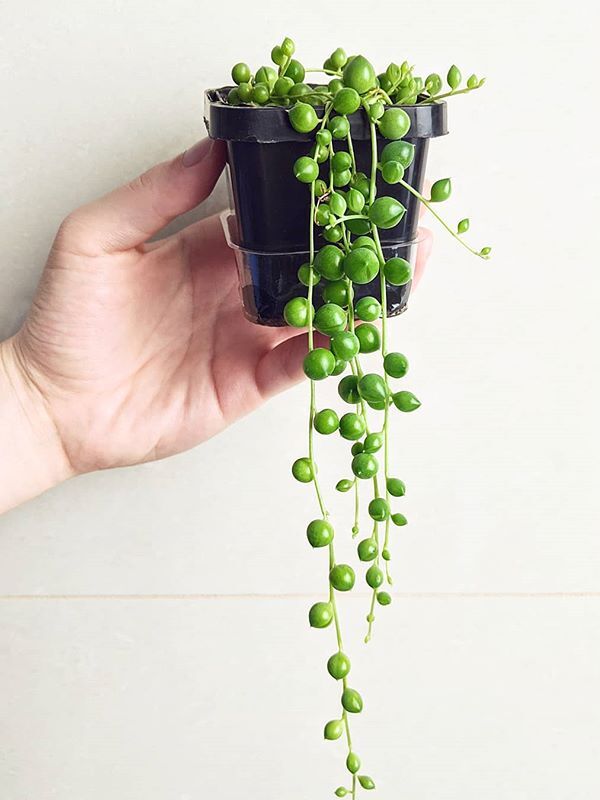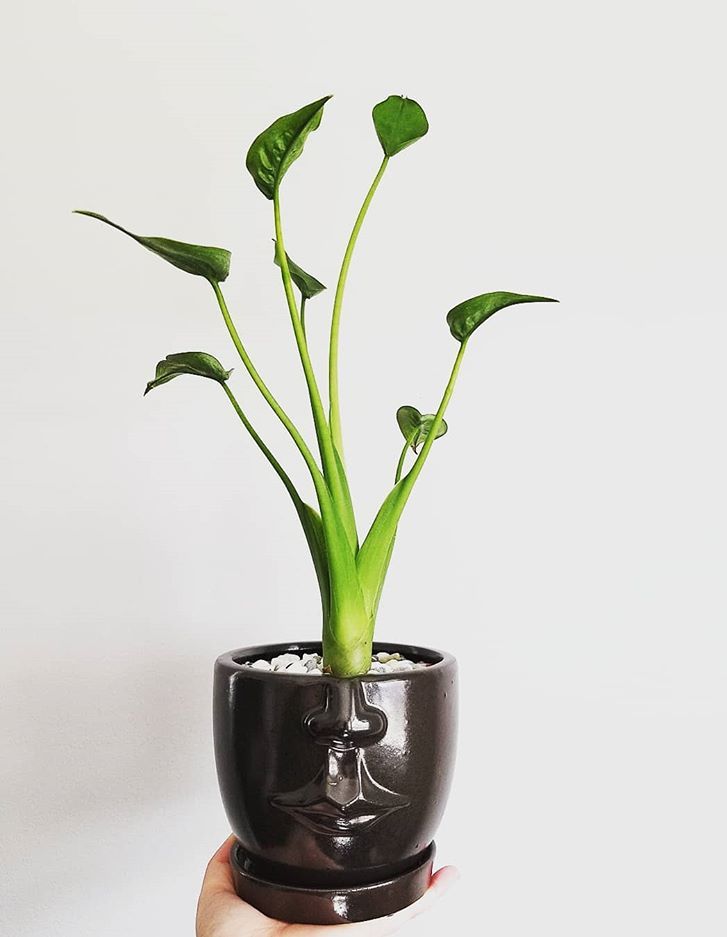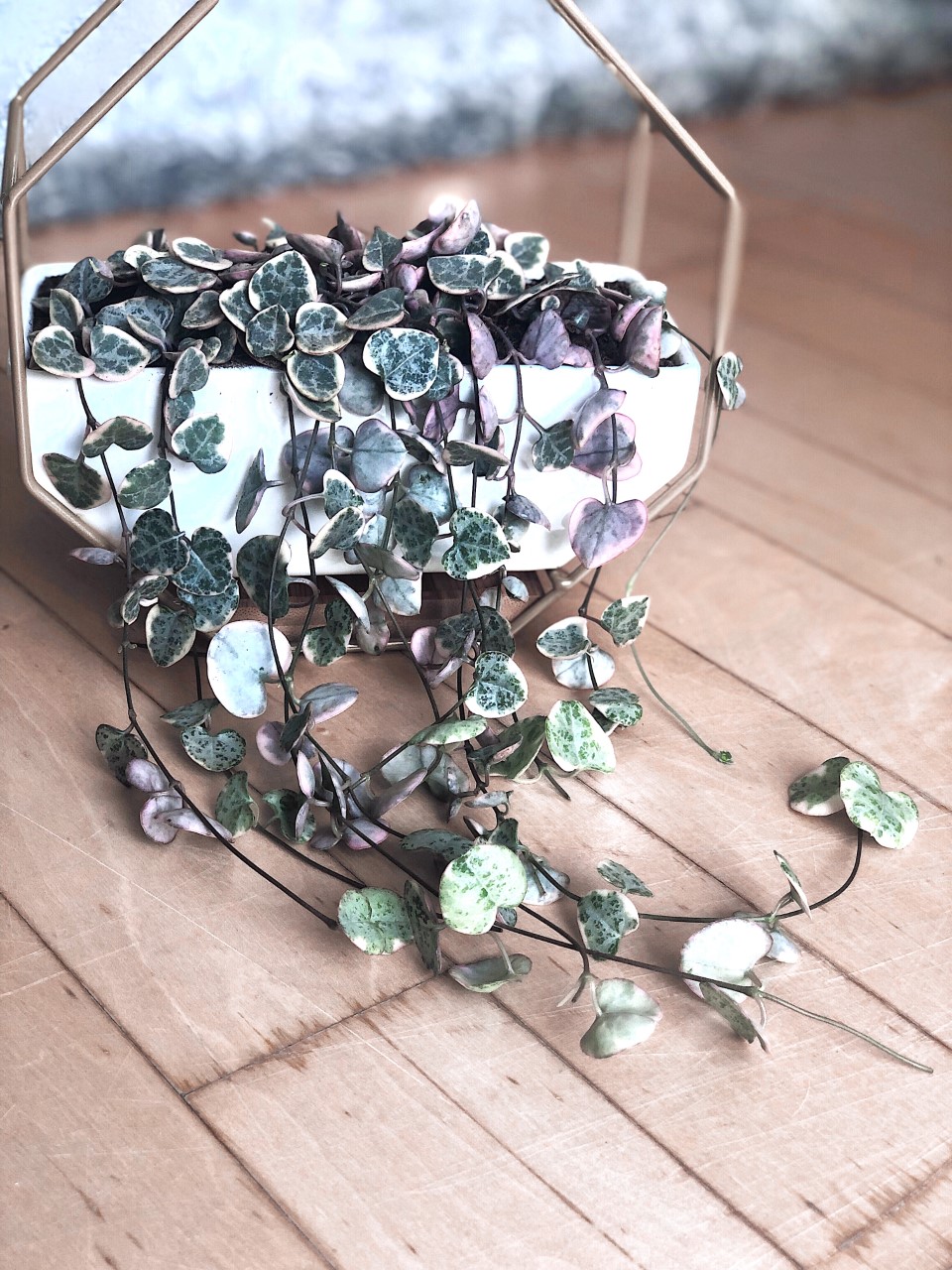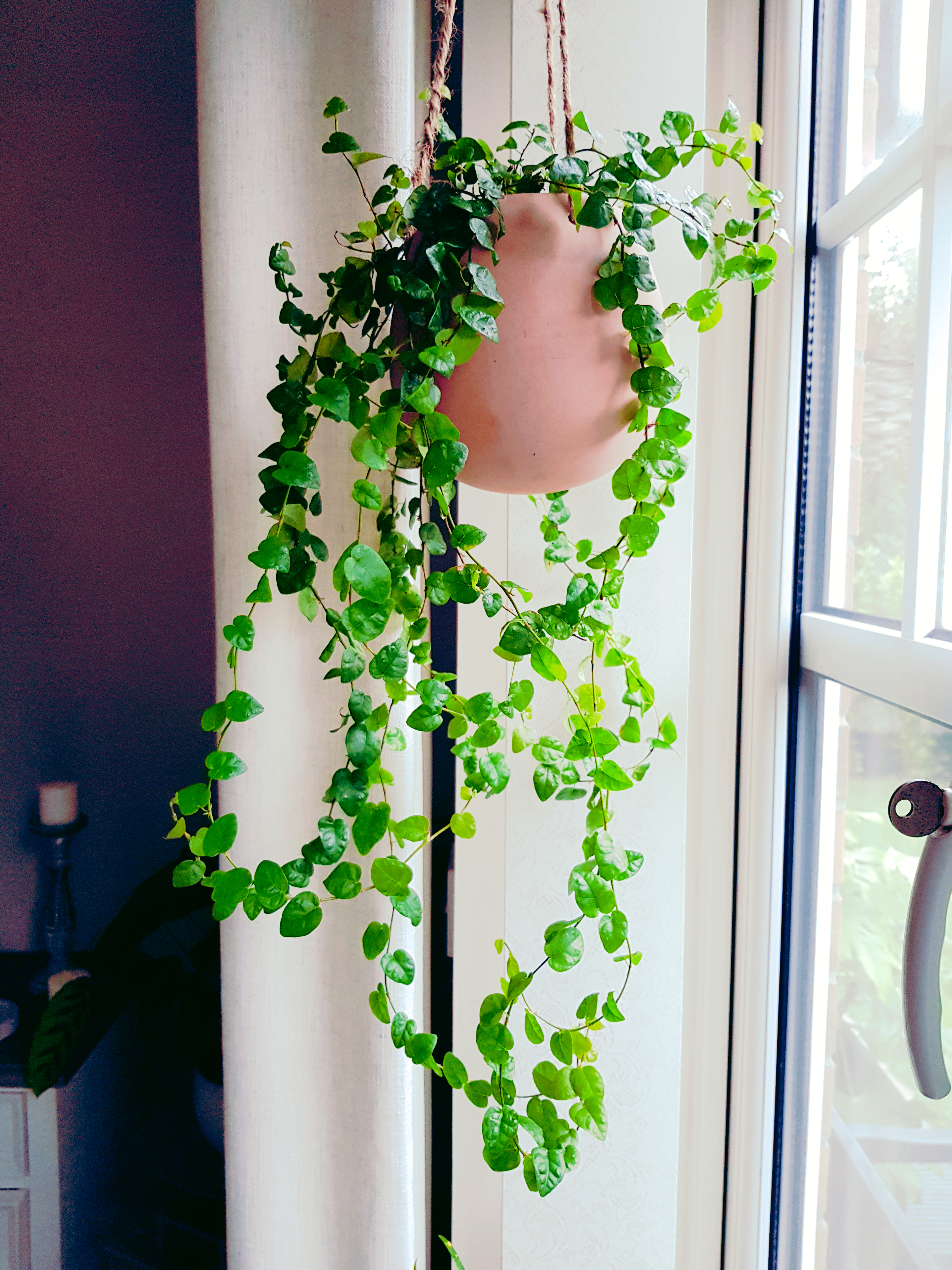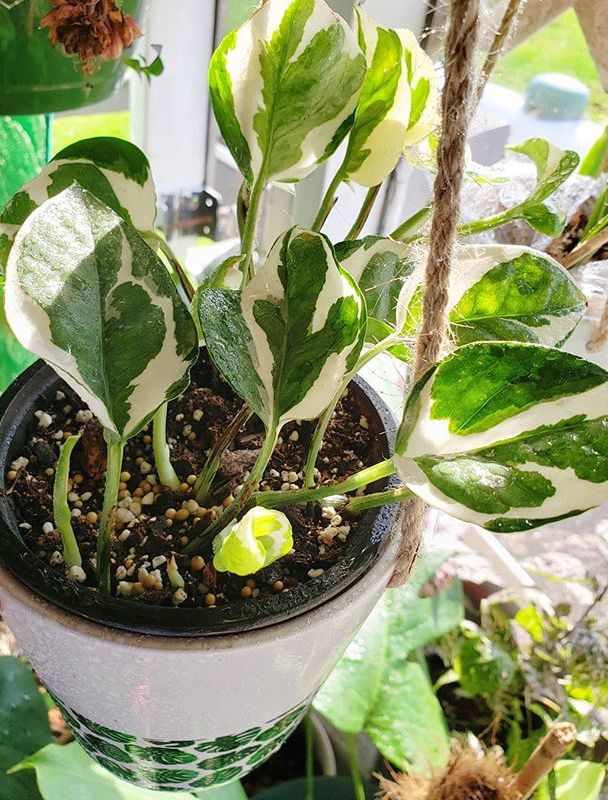The Ceropegia Woodii Variegata is a trailing plant native to South Africa with a delicate heart-shaped foliage and slender vines that can reach up to 12' long in its natural environment.
Ceropegia Woodii Variegata
- Ceropegia Woodii Variegata characteristics Needs bright lightSmall leavesHanging plantPet friendly
Become a green thumb!

Stop suffering for your plants when you're not at home
Easy tips, adaptable systems, and detailed guides for taking care of your plants in your absence.
Sellers
Trusty stores handpicked by us

From $39

From $9.95
Know more about Ceropegia Woodii Variegata
Key tips for successful care
- Don't place this plant in low light conditions or it will lose its color.
- Don't over water it, the roots are skinny and can get root rot.
- Let it dry before watering again.
- This plant is dormant during winter
Ceropegia Woodii Variegata care guide
Place your String of Hearts where it can receive plenty of bright indirect light. Small doses of direct sun are good, however too much direct sun can scorch the leaves.
In the active growth period water sparingly, just enough to make the potting mixture barely moist, allowing the top two-thirds of the potting mixture to dry out between waterings.
During winter, water very sparingly, just enough water to prevent the potting mixture from drying out completely.
Needs a moist environment with above average humidity. Stand on a pebble tray to improve humidity and mist frequently. Pop it in the shower for a while to give it an occasional boost.
Apply a slow release fertilizer once a month during the growing season.
Video tutorials of String of Hearts Variegated care and tips
The video tutorials might not be about the same exact plant, but a plant of the same family, which have the same requirements.
Plants you may like
See allIf you like the look of the Ceropegia Woodii Variegata, you might fall in love with the following plants as well.
